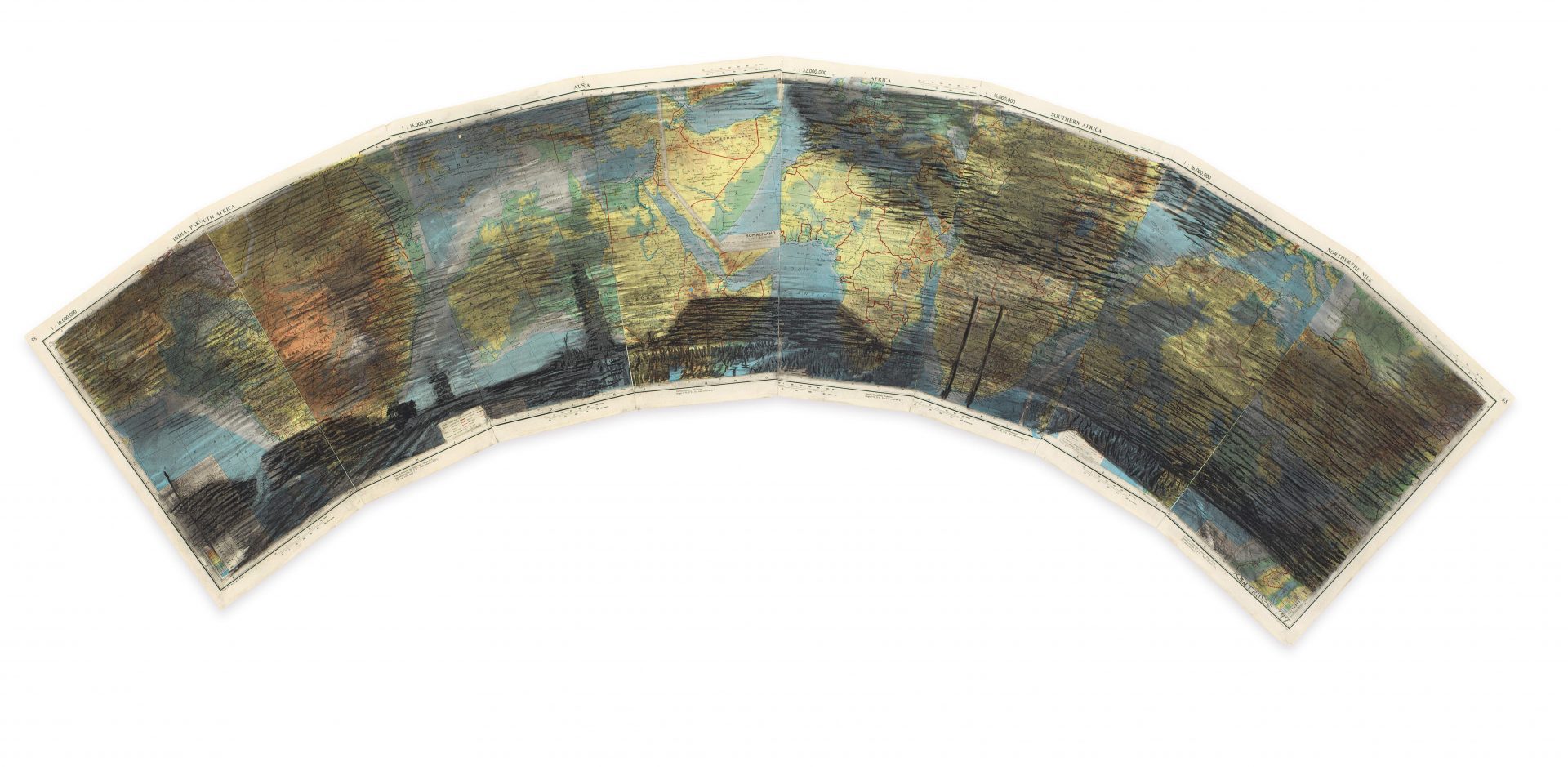William Kentridge (b. 1955)
Landscape on Atlas Pages (India/The Nile), 1999
Charcoal on printed paper
Courtesy of the Leonid and Tatiana Nevzlin Collection
William Kentridge is a South African artist best known for his drawings and animated films that use cultural references to criticize apartheid and confront colonialism. His use of cartography in this work is representative of a colonial approach to territory. Kentridge captures the prejudices inherent in space definition and shows how biases are nurtured through the imaginary construction of spaces.
Must Know
William Kentridge was born in 1955 in Johannesburg, South Africa where he currently lives and works. A third-generation South African of Lithuanian-Jewish heritage. he is the son of the South African lawyer Sydney Kentridge and the lawyer and activist Felicia Kentridge. Often drawing from socio-political conditions in post-apartheid South Africa, William Kentridge’s work takes on a form that is expressionist in nature. His work spans a diverse range of artistic media such as drawing, performance, film, printmaking, sculpture and painting. In the inventive process by which he created his best-known works, Kentridge draws and erases with charcoal, recording his compositions at each state. he then displays a video projection of the looped images alongside their highly worked and re-worked source drawings. In this way, his process and aesthetic concerns are inextricably linked with the narrative power of his work,
“The landscape hides its history. The general nature of terrain and landscape as image is to appear as fact. The power of both the childhood landscapes I have referred to and of the paintings of people…is that they appear out of time. As if they would give us a truth other than their being a single moment in a process which precedes and will surpass the instant represented…The difficulty we have in holding onto passions, impressions, ways of seeing things, the way that things which seem to be indelibly imprinted on our memories still fade and become elusive, is mirrored in the way in which the terrain itself cannot hold onto the events played out upon it.”
William Kentridge, Dan Cameron, William Kentridge, London 1999, p. 126
In this work Kentridge has drawn a charcoal landscape of the mine dumps in Johanesburg, on discarded pages of the Atlas showing Africa. This work reflects on the psychological traumas that remain as vestiges of South Africa’s devastating sociopolitical past.

